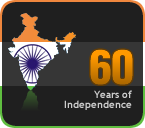 The vast expanse of bushes in a tea garden
The vast expanse of bushes in a tea garden
Some like it hot, some like it cold, some with milk and sugar and some just plain black. Some have it with a dash of nimbu (lemon) and some with a pinch of salt. But all of us go for a cup of tea when we are tired or thirsty or just bored with life thinking a cup of tea will cheer us up. Masala tea really peps us up when we are travel weary, as well as on wintry cold days.
Tea is a universal drink. People do love a good cup of tea any time of the day .Each and every tea drinker has her or his own way of making that cup of tea. The English people were (I am talking about those good old days – I do not know about these days) very particular about making their tea. First wash the teapot with hot water, measure three –four (as need be) cups of water to boil, put three or four (again as need be) spoons of tea - that is one spoon for each cup and one for the pot, add the water once it starts boiling to the tea in the pot and allow it to brew for three minutes. I myself have made many cups of tea this way. I have to mention here in those days tea leaves were prepared in a different way. Today tea is manufactured in the C.T.C. manner. C.T.C. means cutting, tearing and curling.
Good tea is the product of good leaf. Good leaf depends on the age of the tea bush and regular pruning of these bushes. Plucking of the tea leaf (two leaves and a bud) starts in early morning and goes on till late afternoon. I understand that the leaf plucked in the morning makes the best end product. Women carrying the plucked tea to the factory
Women carrying the plucked tea to the factory
Every plucker has to pluck the stipulated amount fixed for each day. Plucking more means the plucker gets more wages and less means less. Once the plucked tea leaf is weighed and noted for record each day, it is transported to the factory where the processing is done. Workers readying the tea for the withering trough
Workers readying the tea for the withering trough The withering trough
The withering trough
 The CTC roller
The CTC roller A heap of CTC tea - all sorted and ready to go into the bag
A heap of CTC tea - all sorted and ready to go into the bag
Retail tea is a blend of different grades by mixing the product of a variety of tea gardens and sometimes from more than one country of origin. Blending of tea is done by expert tea tasters.
While having that cup of tea I wonder how many of us think or bother to know how much effort is put in to bring that tea to one’s table. Personally speaking, I never bothered about it because we never had tea at our home unless we had guests or visitors who were tea drinkers. We were sworn coffee addicts. All this changed when our youngest daughter got married to a tea planter some twenty odd years ago. We were introduced to garden fresh tea and it tasted nothing like the marketed tea we had back home. It was wonderful. tea with a full flavor and fresh-smelling. There is no after taste in a cup of real good black tea. Nowadays I start my day with a cup of lemon tea. I have now turned into a tea addict. Tea laid out for tasting
Tea laid out for tasting
Having spent a good deal of my life in the last ten and odd years in the tea garden with my daughter and her family I have realised that it takes a lot of work, effort and responsibilities for the tea planter to bring that cup of tea to the table. The tea gardens are either owned by individuals or belong to incorporated companies, based in Calcutta. Every tea garden is under a manager. He has with him four or five assistants to help run the garden and also the usual clerical staff. The manager is responsible for the smooth running of the garden and the factory in each garden that turns the fresh leaves plucked daily into ready to pack products. He is answerable to the higher authorities in Calcutta not only for matters connected with the smooth running of the garden and the factory but also for damages caused in the garden because of natural calamities like unseasonal rains, hail storms, drought or excessive rains.
Almost all the tea gardens in the Dooars area are surrounded by forests. Hence there is always the danger of wild beasts like elephants, leopards and wild bison entering the Tea gardens. The elephants are the most feared ones. They come in hordes of fifteen and twenty and are capable of causing too much damage. They usually enter the labour lines at dusk attracted by the smell of cooking. These animals also go to the vegetable gardens of the bungalows in search of corn and fruits. They pull down the houses of the labourers, sometimes even attacking humans. There are times when these elephants kill people if they are not in good mood. Uprooting trees and tea bushes are mere child’s play for the elephants. But this is always a source of headache for the manager. This is all because humans have entered into animal territory and the animals are kind of showing their protests. This is only my reasoning.
The English were in power in India when tea cultivation started in this country. They were very clever in settling down comfortably in the colonies occupied by them. Likewise in the tea gardens too they made life easy and comfortable by building big airy bungalows for themselves. (These types of bungalows are seen all over India even today in the district head headquarters. In those days these bungalows were meant for the District Collectors and Inspectors of Police) The tea culture and the life for the people working in tea gardens were styled by the English planters equal to the life style they had left behind in their home towns. Every garden has the manager’s bungalow on this style and smaller ones for the assistants and the doctor. The doctor in each garden who is in charge of the hospital is available twenty four hours to the needy labourers as well as the managerial staff and their families.
The ‘Labour lines’ are where the workers in the tea garden have their houses. Each Garden has some thousand to thousand five hundred workers some permanent and some temporary. They are given free houses - two roomed with a kitchen and bathroom. They are provided with heavily subsidised rations, free firewood and free water supply and free medical care. They keep their homes in good shape – I am told - some of them with good furniture. Most of them own TV sets too. I have seen the small plot of yard in front of some of these houses, they are well kept with many flowering plants. There is a crèche to take care of young kids while the parents are working. Education is free up to Middle school. Even with all these facilities given to the workers they are never satisfied. They are always making new demands for more wages or increased bonus which they get annually during the Puja season. The worker’s demands are instigated by different party and union leaders. To pacify the union leaders and the workers and bring a settlement between the workers and the Head Office in Calcutta is the manager’s responsibility.
All said and done, the manager’s life is not a peaceful one. It is there with him all the twenty four hours. Some times his family has also to bear the brunt of it. With all these handicaps if he produces that good cup of tea I enjoy, I salute him. LONG LIVE HIS ILK.




